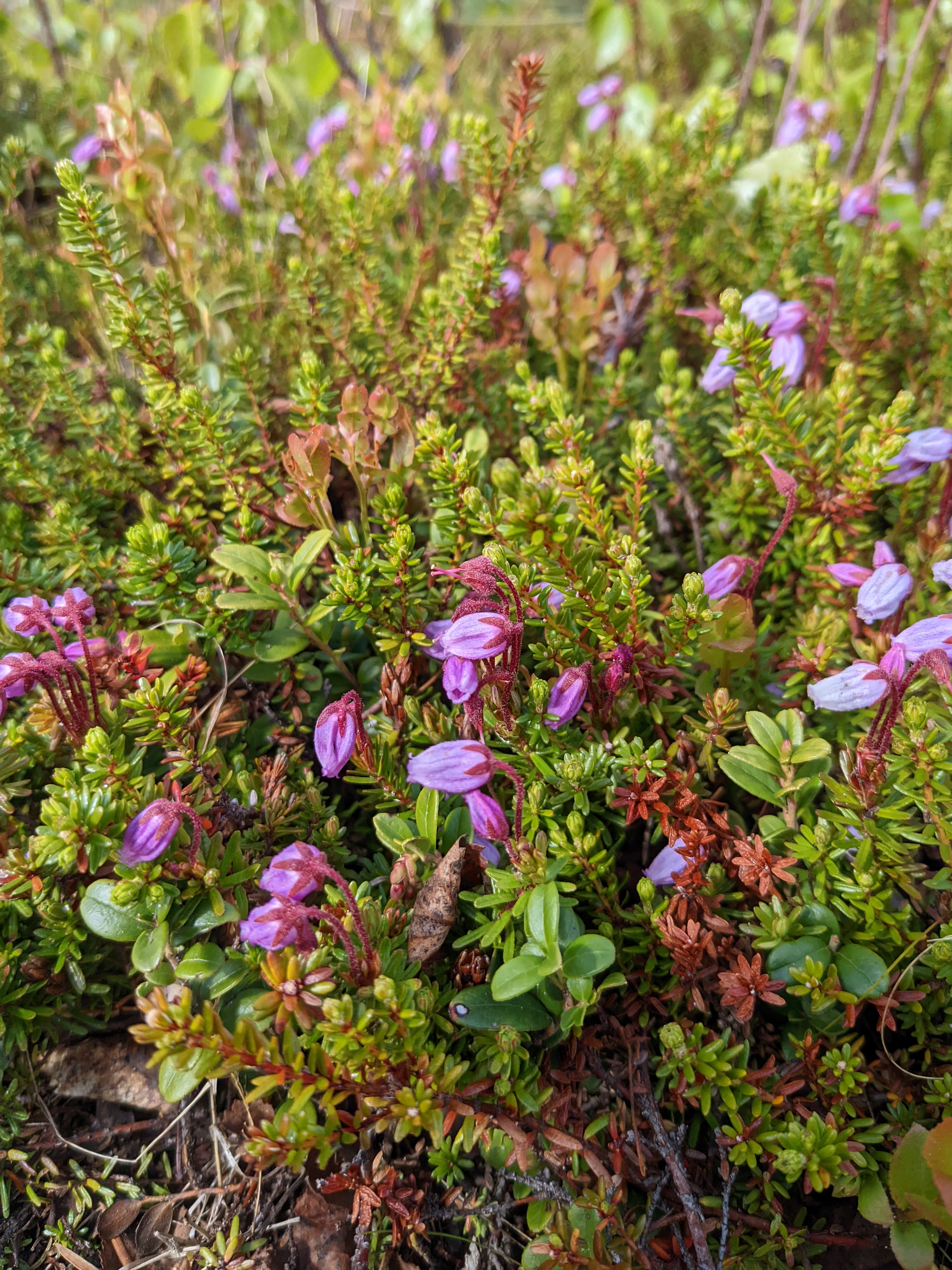Alone in Øvre Dividal Nasjonalpark
The beauty of Norway’s national parks often begins outside the park boundaries. It’s not just that Norway is shockingly pretty. Rather, the parks are often bordered by wildlife preserves, or by only slightly more developed wild land.

Øvre Dividal is no exception. (“Upper Divi-valley”, where Divi comes from old Sami for “large round hill”) The main access road passes from pavement to gravel, back to pavement after the handicapped fishing area, and then to extremely well-maintained dirt and gravel after that. These shifts come at ownership or management boundaries, and you spend miles in pristine forest land before reaching the parking lot.
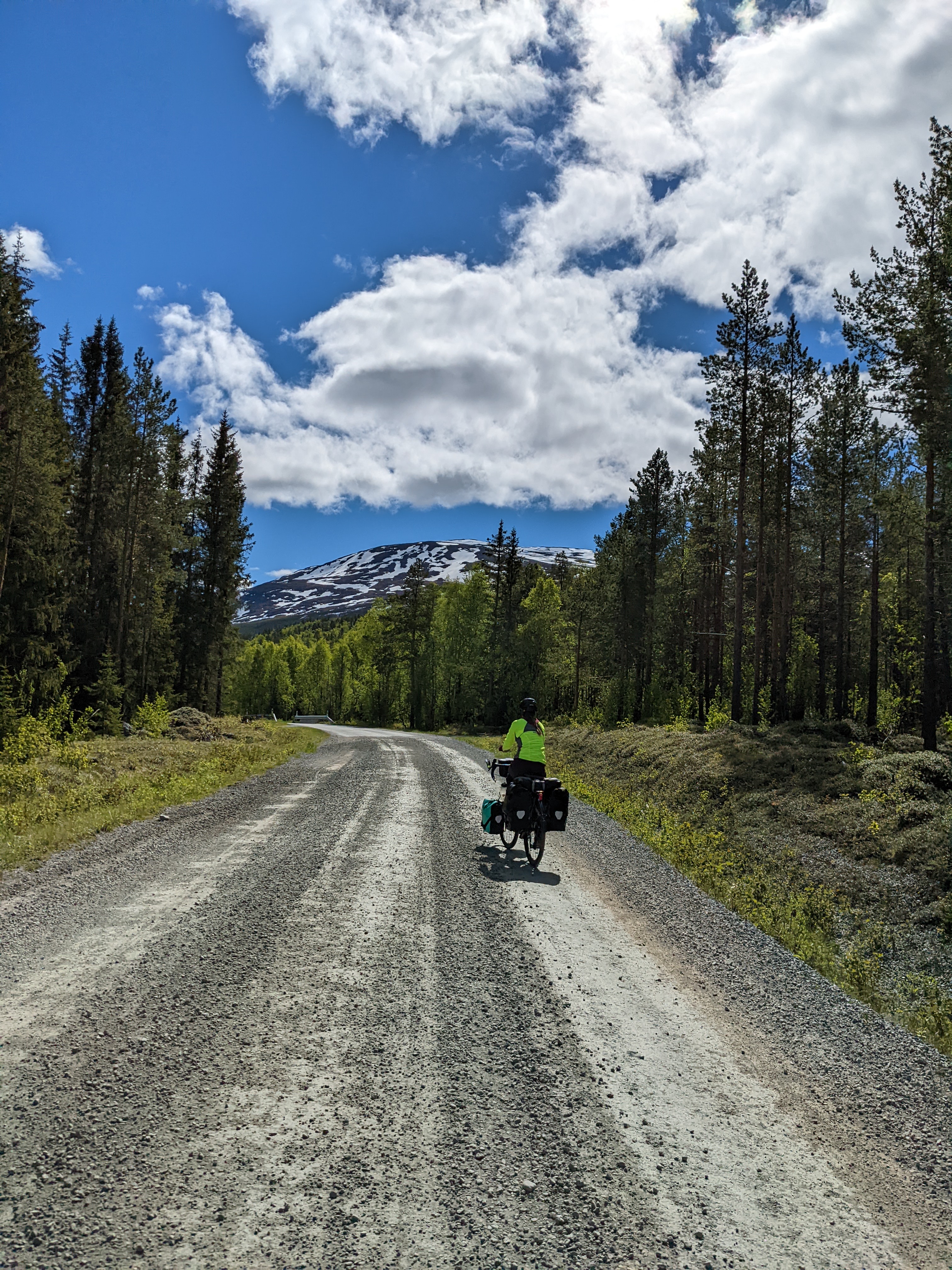
Along the way, you pass an ornithological research station, two refurbished Statskog (state forest) cabins, one dating back into the early 20th century, and one of the most magical stretches of river I’ve ever seen (at Finnbruene, the Finn Bridges). You must then hike singletrack trail until signage tells you you’ve actually entered the park.

Our experience of visiting Øvre Dividal included all of these experiences, parkland or not. I’ve chosen to present them together, beginning when the road first turned to gravel.
Public cabins
State, local, and nonprofit organizations in Norway own hundreds of cabins in beautiful wild places. Many of them are publicly available for use, as in the Alaskan hunters’ cabin tradition, but with better funding for maintenance and maybe more formal practices for their use.

There’s significant variation from cabin to cabin and especially from owner to owner. At their heart, though, the rules generally boil down to:
- Use the shelter with common sense.
- Respect other users by leaving the shelter in similar or better condition than when you found it.
Statskog cabins tend to be simple one-room shelters, free of charge, and open for anyone to use. Many are open year-round, though some have seasonal closures, for example prioritizing support for winter travelers.
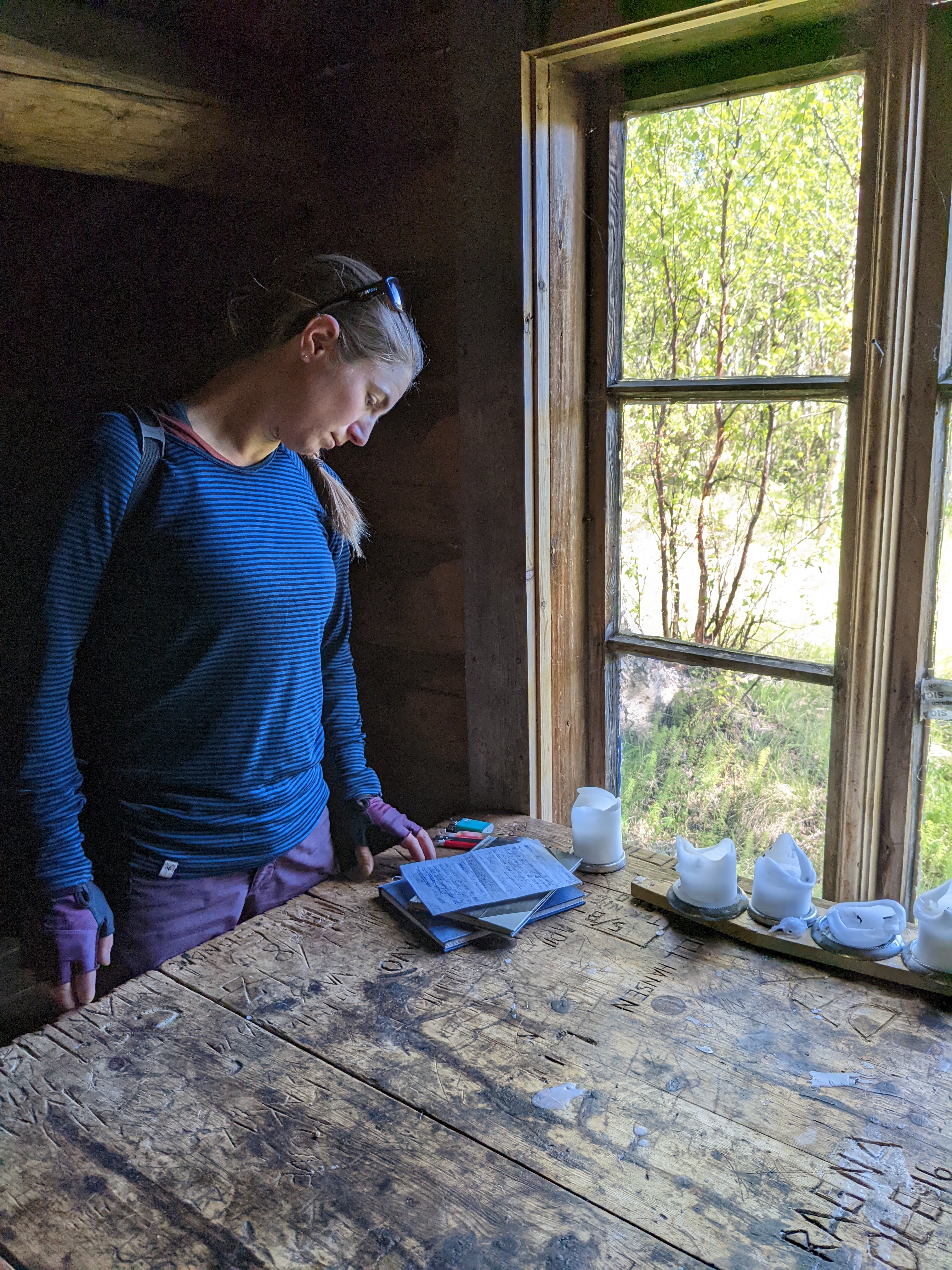
It’s common to find dry firewood in the cabin, with plenty more stacked under cover or standing outside to dry. Sawhorses and saws are there for bucking. A splitting axe or two are always there for splitting your bucked wood. The axe hafts are often a bit broken up below the bit, but with caution they’ll do the job. Tea lights and long-burning candles can usually be found in a cabinet or on a shelf, as can matches. The cabins are simple but cozy, and it’s easy to imagine what a pleasure it would be to ski into one of them on a cold, dark night, start a fire in the wood stove, drink a cup of tea, and settle in to dream until morning.
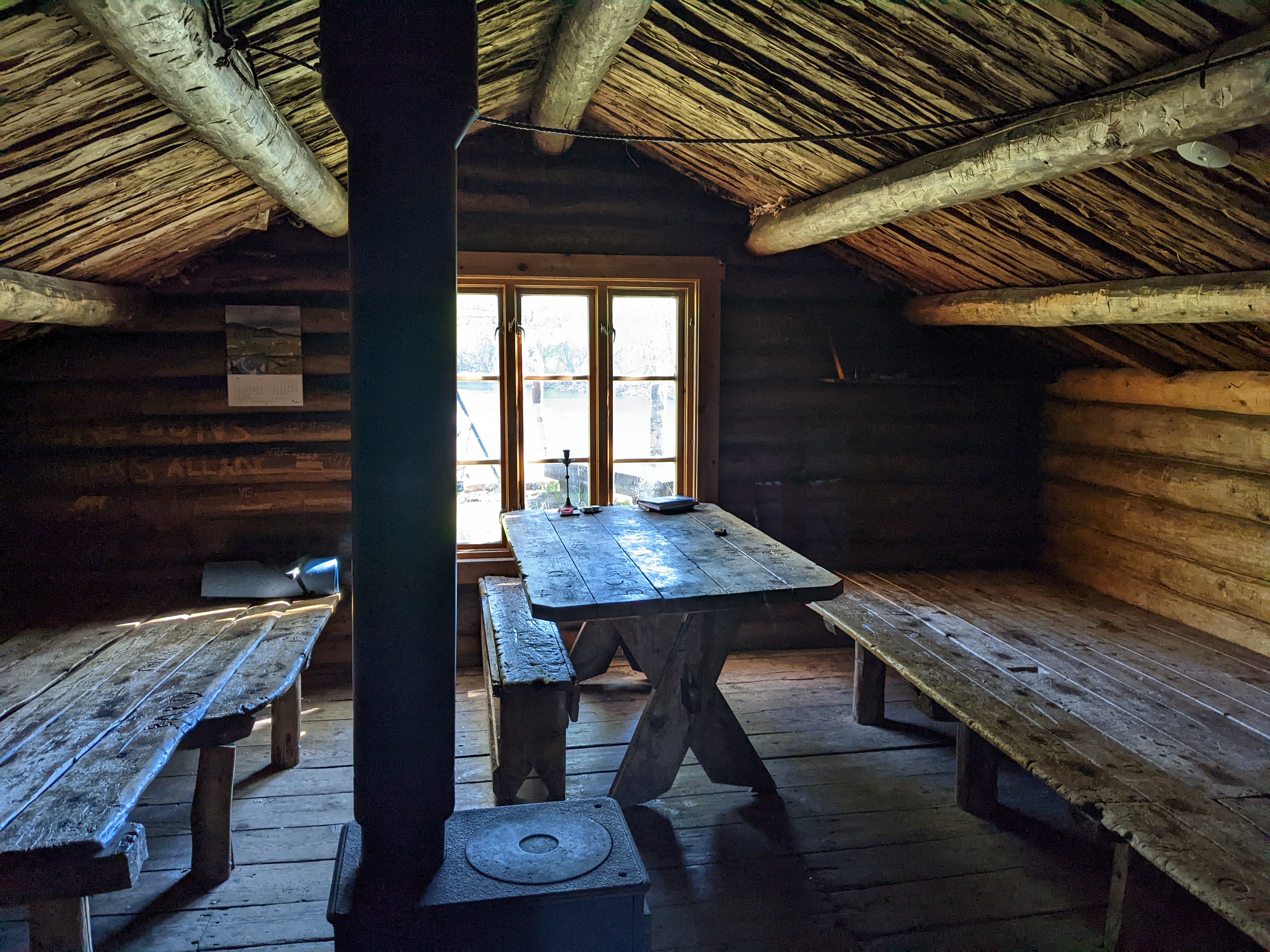
The Finn Bridges (Finnbruene)
The informational signage describing the forest around the park says only this about the Finn Bridges:
“If you have children, it is allowed for them to go down to the caves below the Finn Bridges, but care should be taken - you might hold their hand.”
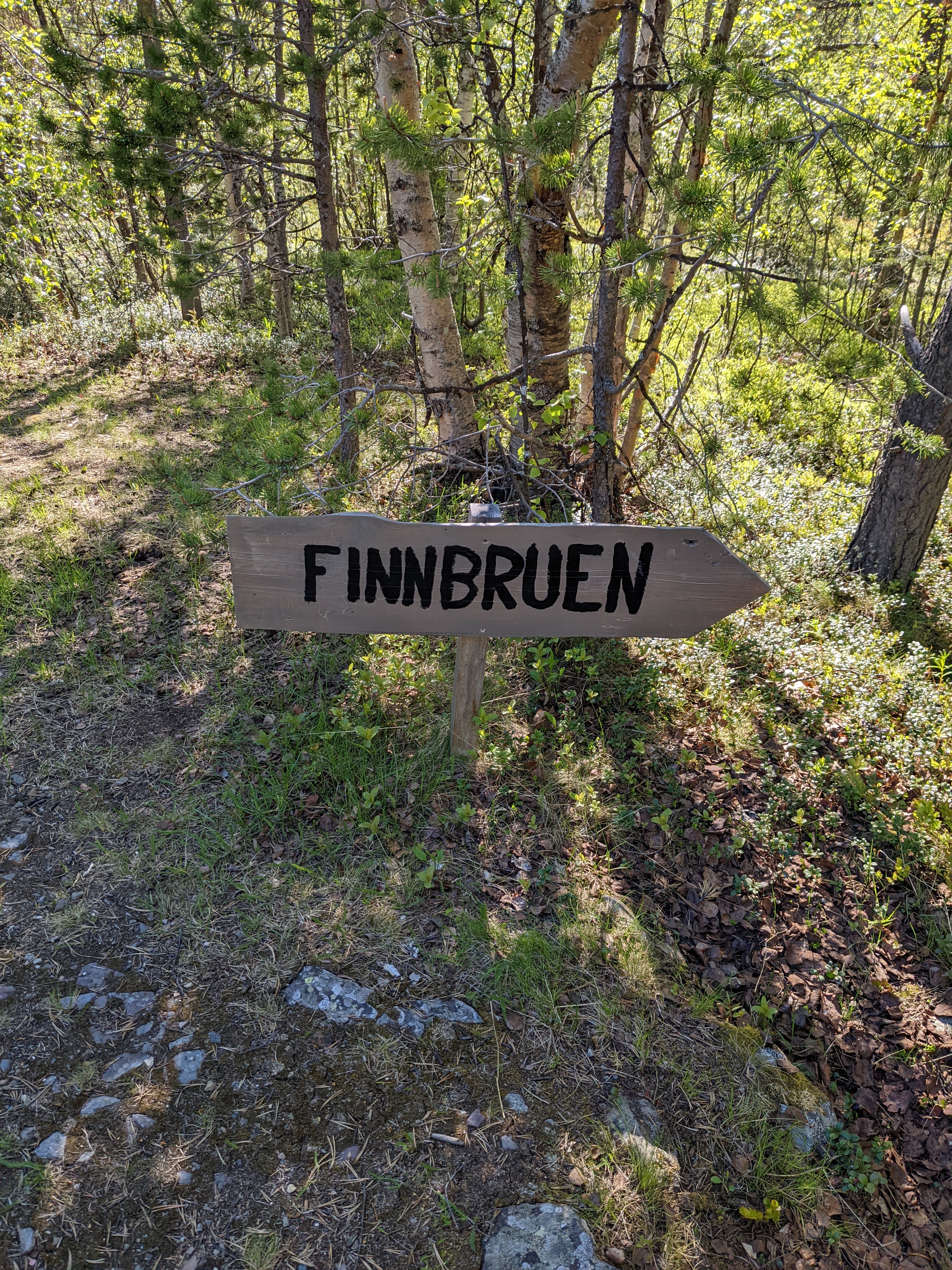
What could be better bait than a vague gesture toward manageable risk, and the mention of caves under bridges? I dragged Heidi down the (steep!) braided trail to the bridges. Or the bridge? The sign at the top was for one bridge only (“the finn bridge”).
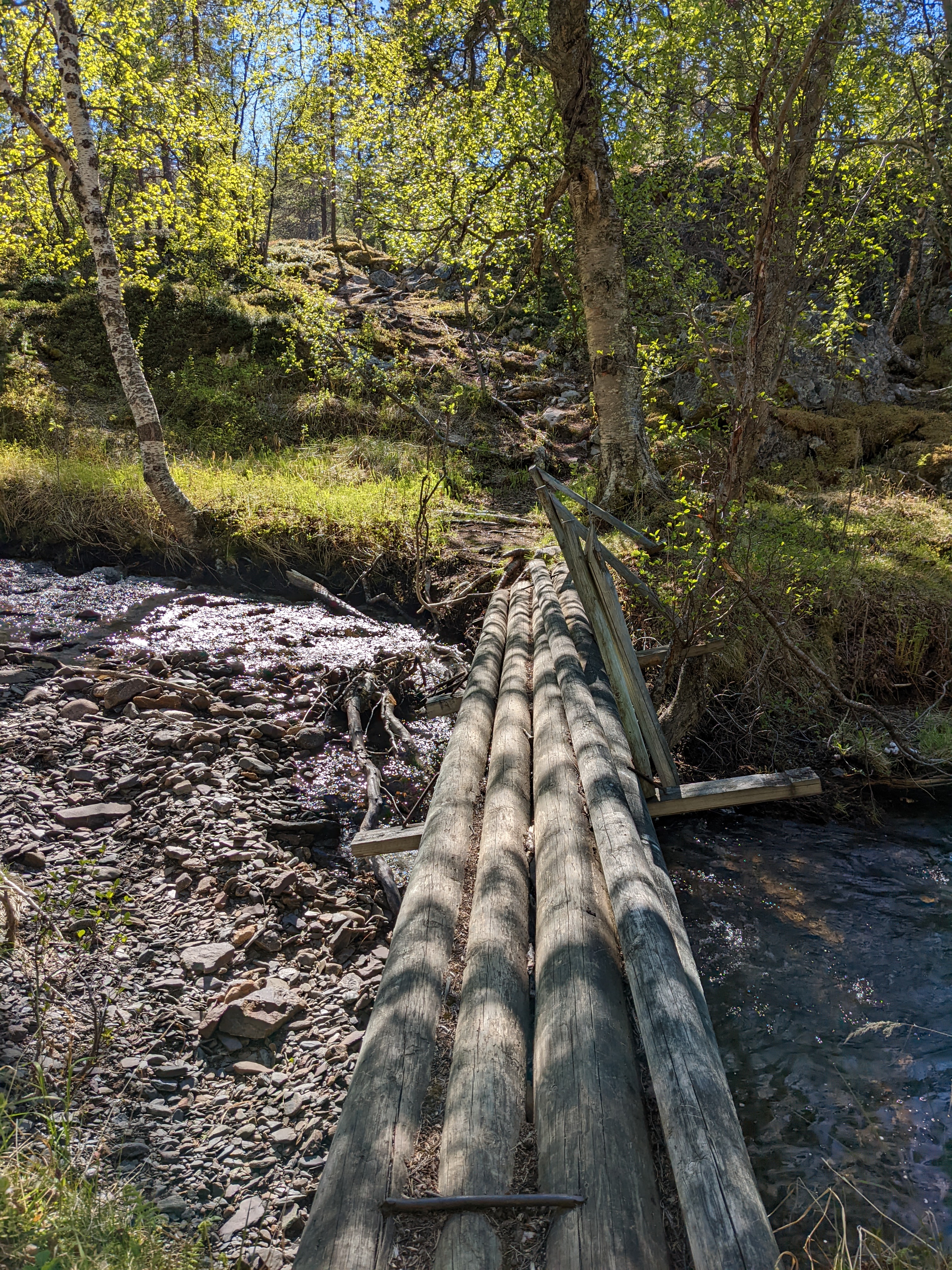
The first bridge was… underwhelming. We’d spent a long time on the road already, and we were antsy to get into the park. I was skeptical enough after the signage and this broken-down bridge that I nearly turned back to the bikes.

What followed was pure magic, though. A series of three or four well-built bridges, connecting thin strips of stone and rich pine forest. Under them, millenia of erosion raking its claws into the bedrock.

The Divielva river splits into wild, winding channels here, like I’ve never seen before. Each has its own character.

The first is thin and wild, white water ripping through a channel at an unnerving pace. It widens below the bridge into a stream maybe five meters across, but the rapids there still churn white from edge to edge.
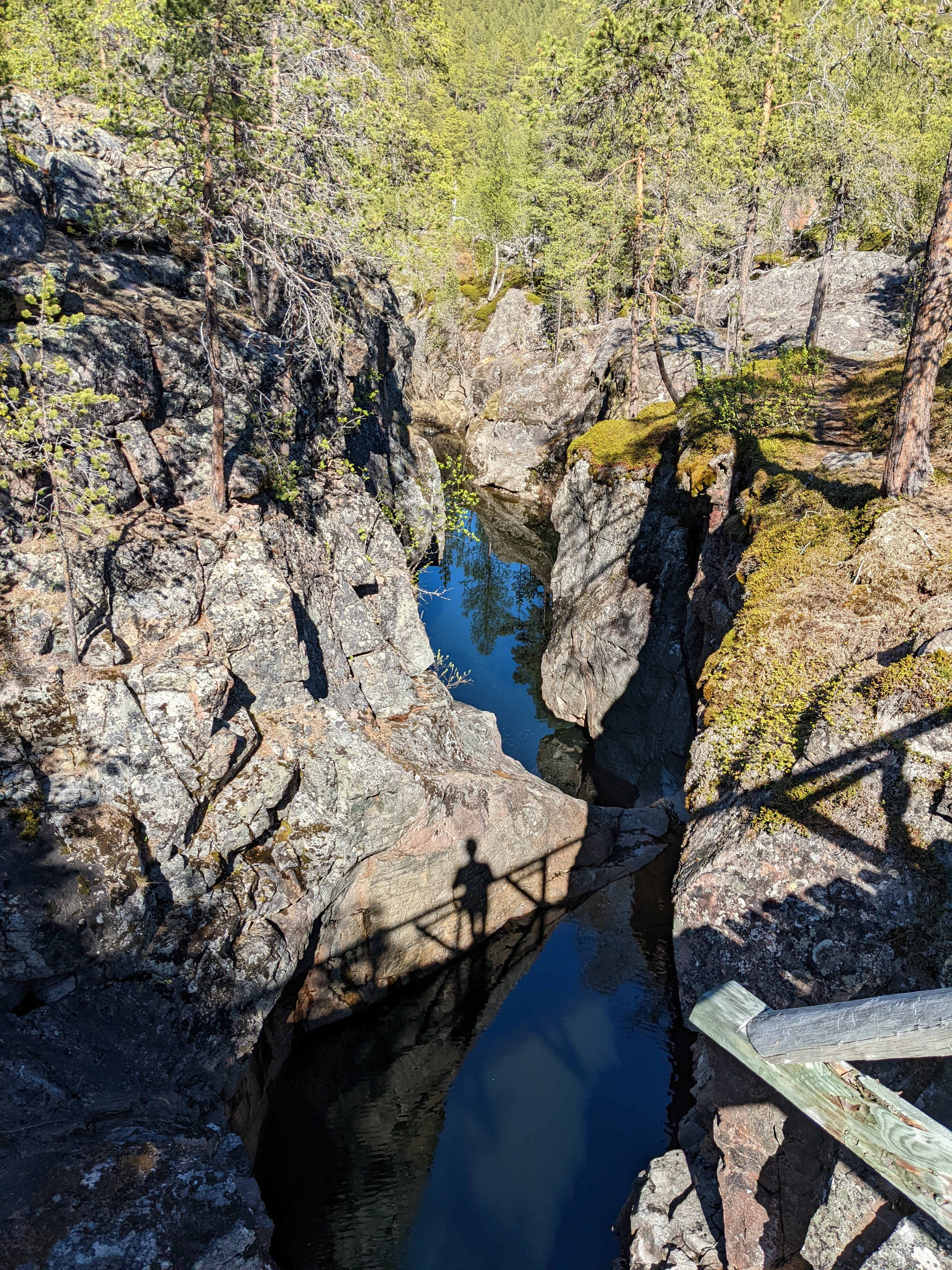
Other bridges are milder, spanning wide gaps with little flow. The still pools still pass water downstream, but not much more than a trickle. I was tempted to swim in these, for their relative warmth. I couldn’t shake the feeling that there was a better option.

In a pocket just upstream of this rapid, there is a slow-moving backwater. It’s deep enough to swim in, cold as the snow it melted from, and it circles calmly away from the scary stuff below it, over a soft pebble bottom. The sun was out, and it was just warm enough for a dip.
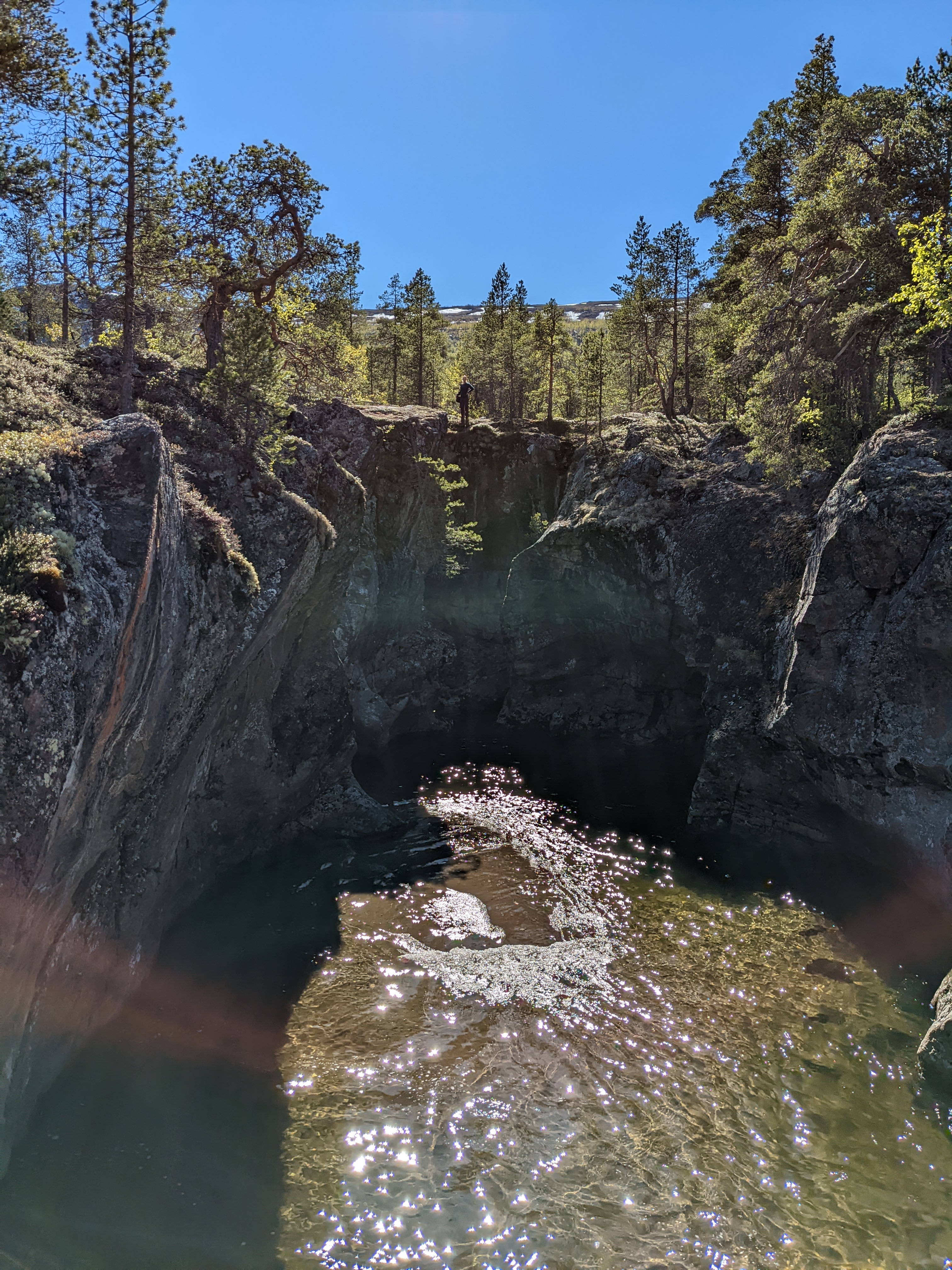
Into the park
There were eight cars in the trailhead parking lot when we arrived. After stashing my laptop under a very fuzzy woodshed, we repacked food, clothing, and basic sleeping kit into backpacks for the hike in.
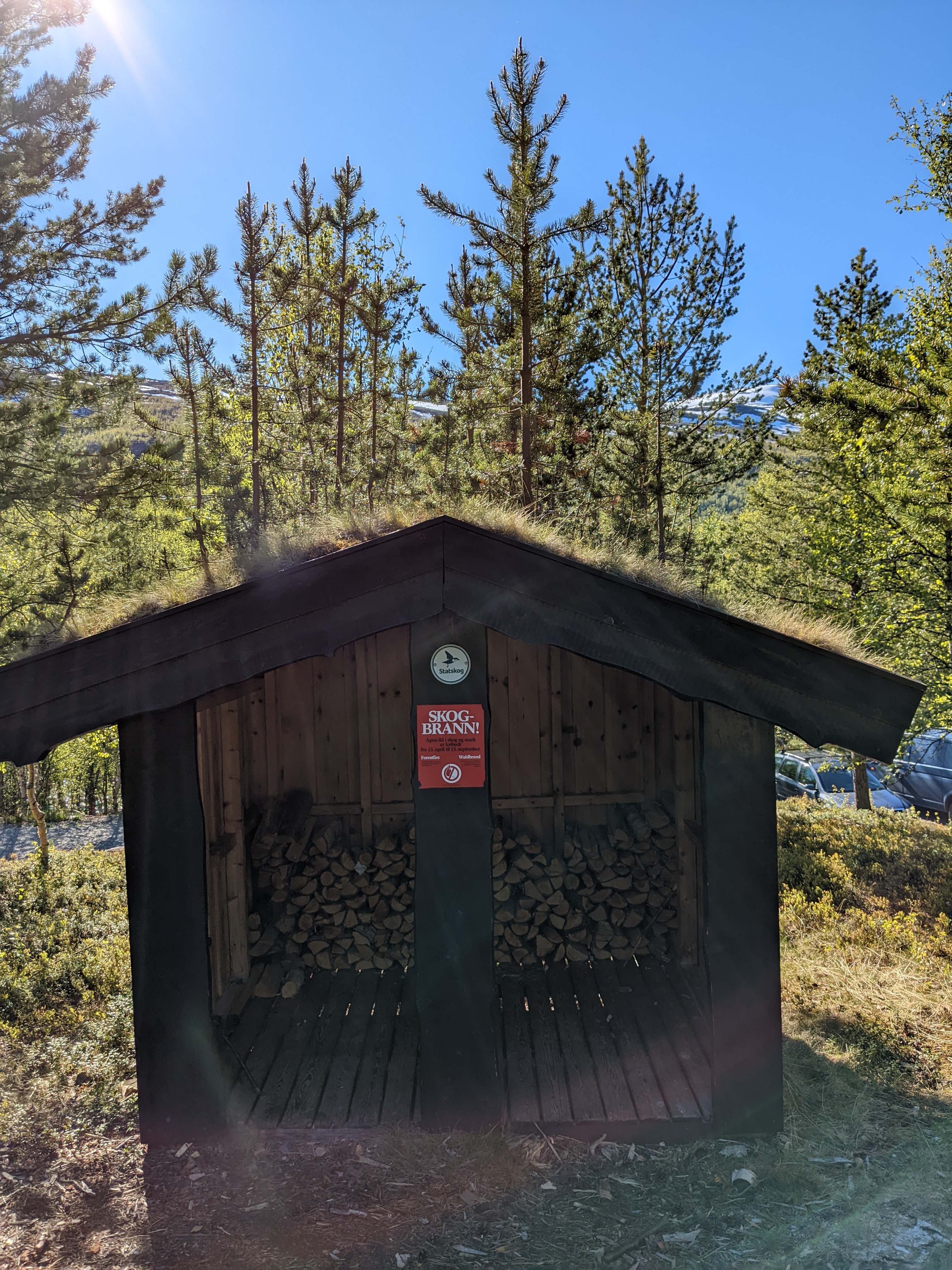
We filled up some bottles at the first creek, H soaked her pants with a poorly-closed water bladder, and we headed up through the wetland and the forest.

There’s still plenty of snow in the high country. That, alongside Norway’s frequent rain, makes for many wet stretches. The trail spends much of its time crossing this marsh land, but boardwalk covers all of the wettest ground. There are quite a few small creeks, all easily crossed by hopping from rock to rock.
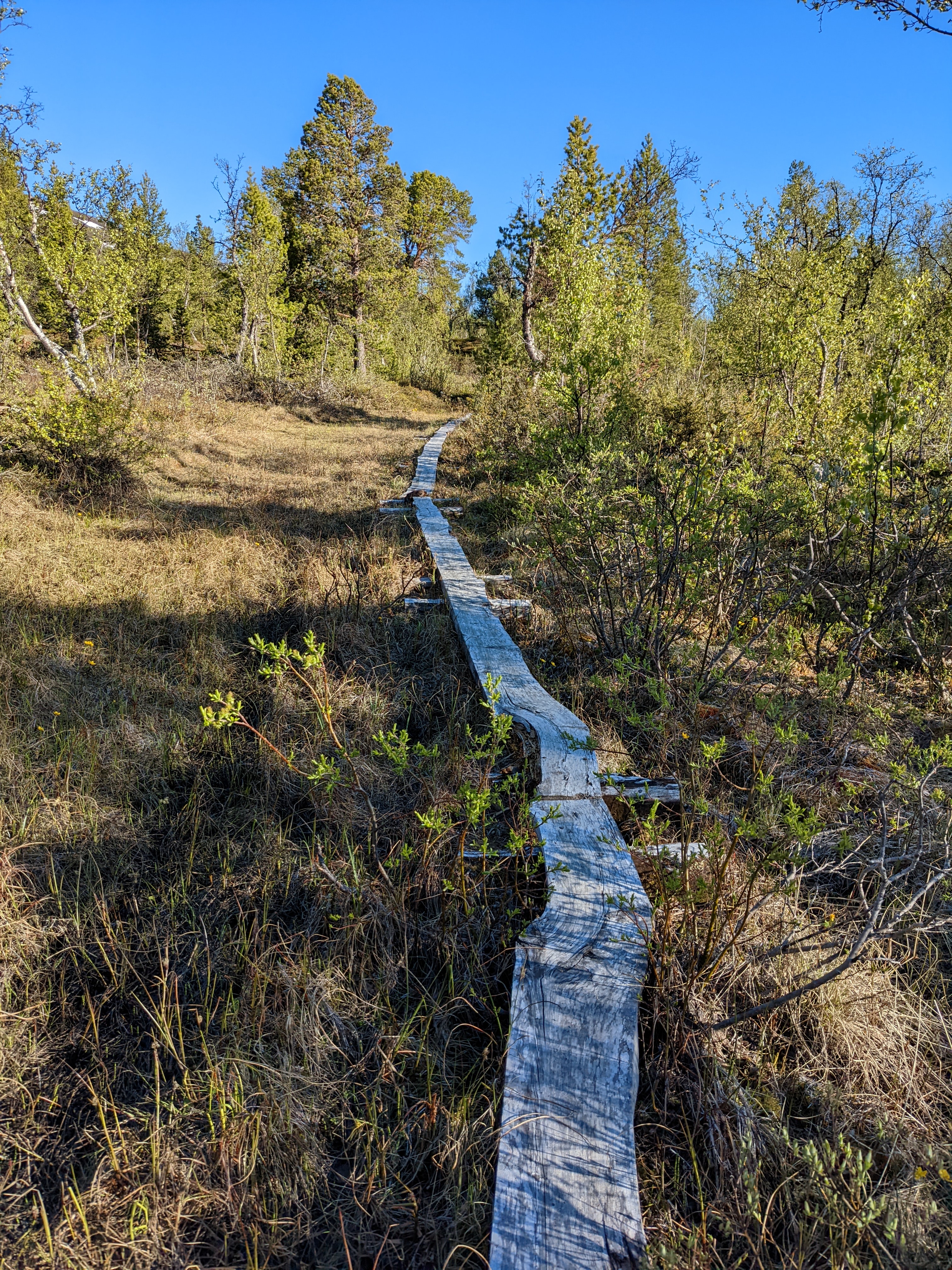
The trail to Dividalshytta rises gradually over the 7km from the parking area. There are lots of fun mossy-bits, and rocky bits, and lots of life everywhere. Notably, we spotted good-sized mustelid scat along the trail. The park is known for its population of wolverine, but I suspect this critter was smaller.

The transition from pine woods back to birch comes as you continue up the hill. It feels a little bittersweet, like walking backwards from the summer into spring. On the left, the hill climbs more steeply until it reaches the escarpment. To the right, the river valleys open below you, with smaller rivers feeding into the Divielva.
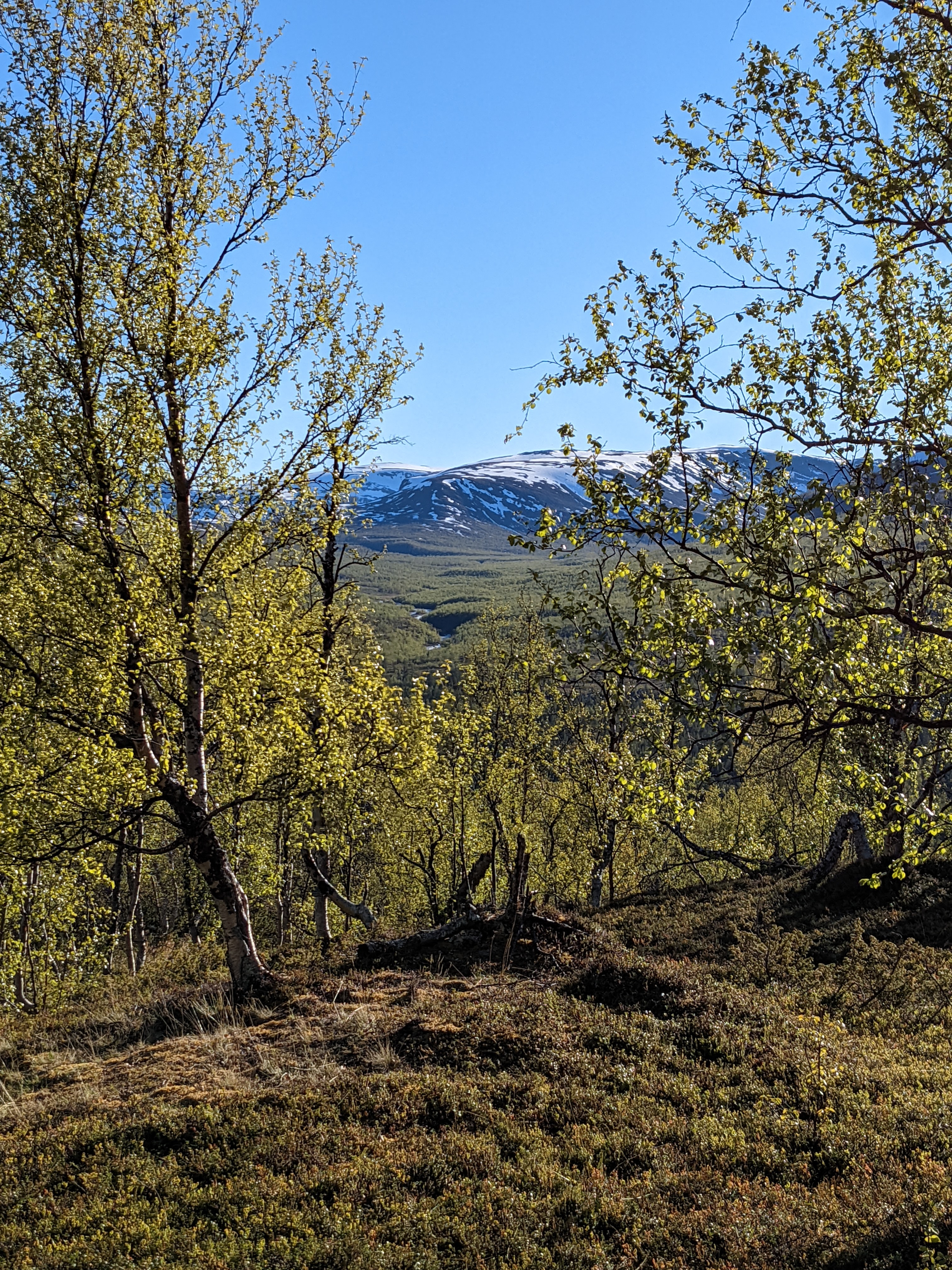
We hoped to spend the night in one of the DNT (Den Norske Turistforening) cabins inside the park. With so many cars in the lot, we thought it might be busy, and I’d been tracking one set of footprints along the trail in front of us. When we reached the Dividalshytter, though, we found ourselves alone.
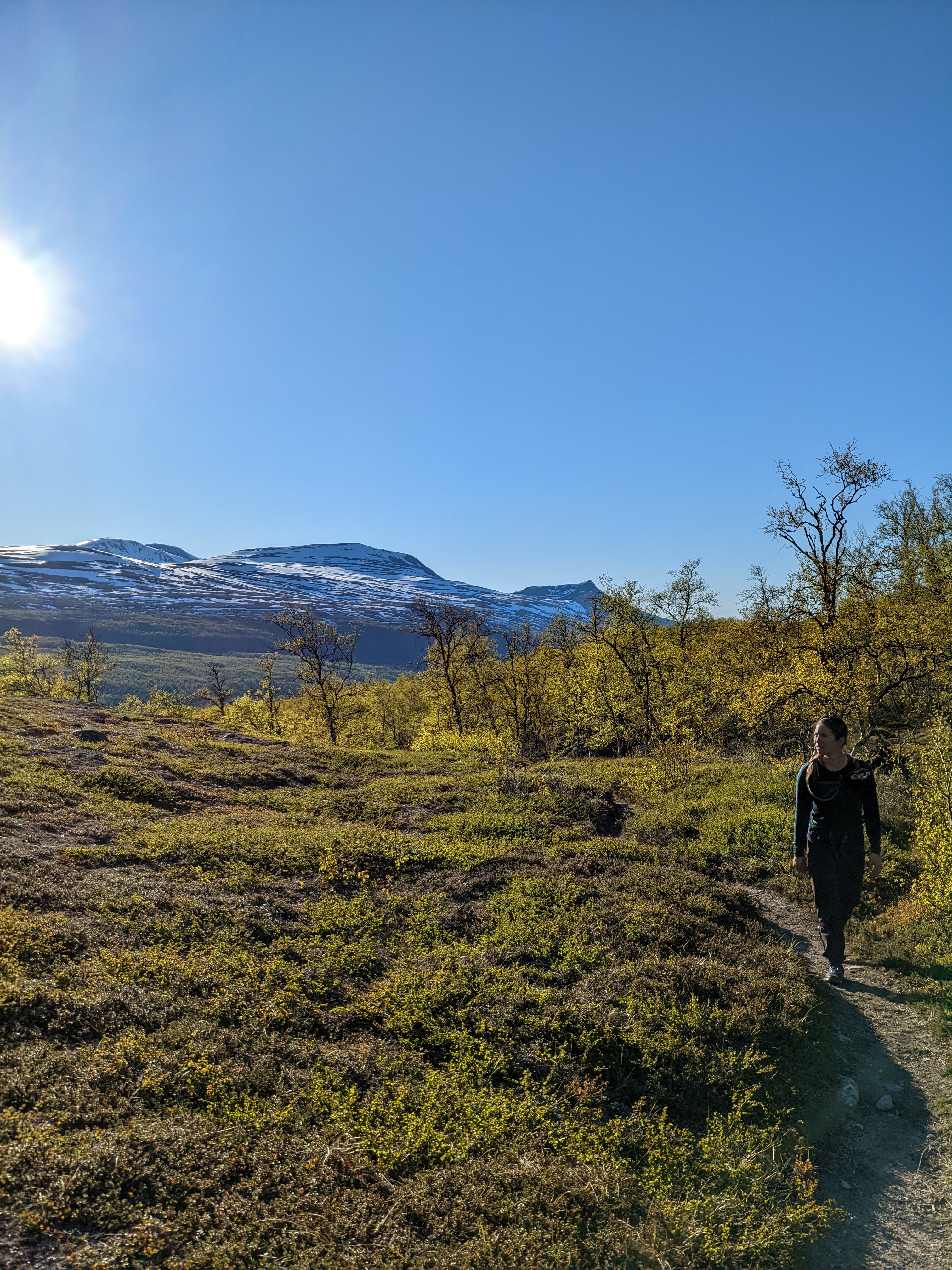
DNT huts are private cabins
We would stay for two nights in the Nye Dividalshytta, owned by Troms Turlag and part of the national DNT system. The Norwegian trekking association (DNT) provides members key access to beautiful backcountry cabins all over Norway.

Membership is a bit pricey at $80/year and cabin use costs members an additional daily/nightly rate. The cabins are wonderful, though. Well-built, stocked, and maintained, they’re much cheaper than a hotel, and the wood stoves make drying laundry quick and easy if you need to do some washing up. The keys are ubiquitous, and check-in and payment are only loosely monitored in any places, making this, like many things here, a system built mostly on trust and goodwill.

We arrived late in the evening, but the forever daylight here made for a soft landing.
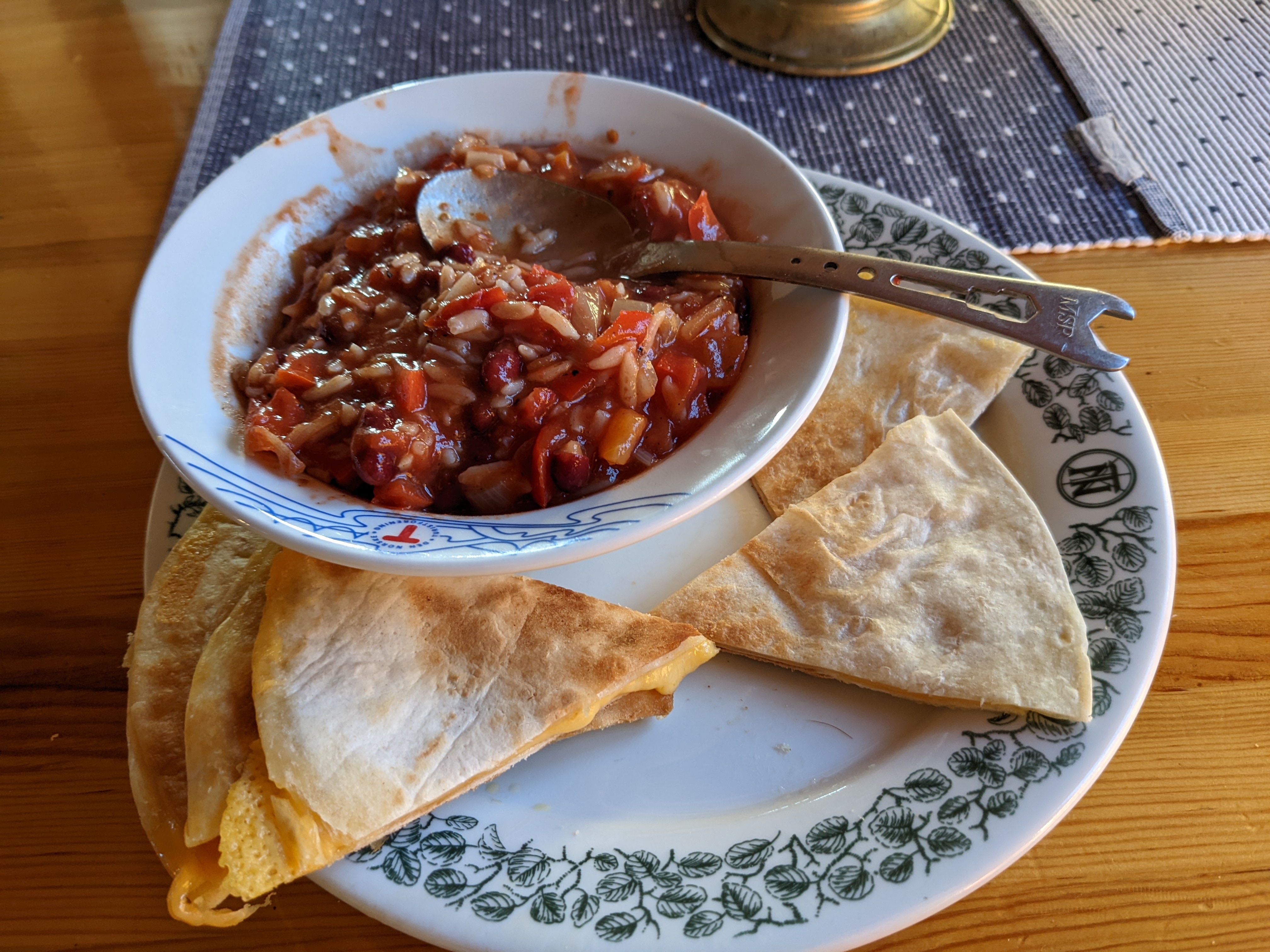
I mean it when I say the cabins are well-provisioned. There was a full tank of propane, plenty of firewood, and all of the cooking equipment you could need. By 9 we’d whipped up a late dinner of quesadillas and chili, and had mostly settled in. Man, that meal was delicious!

As a bonus, I got to use a wooden yoke for the first time ever, hauling water from the well for the next couple of days’ use.
In Reindeer Country
The following morning, the skies threatened rain. We headed up to the top of the escarpment anyway, with our hopes set on climbing the nearest, smallest peak, Lille Jenta. The trail went straight up the fall line, which I love, even if it isn’t great for erosion.

It wasn’t long before we’d gained the high bench below the peak, and we set off cross-country towards a low-angle ramp to the summit. The forest up here is small and lively. Heather and willow shrubs, dwarf birches (B. nana), mosses, and lichens are everywhere.
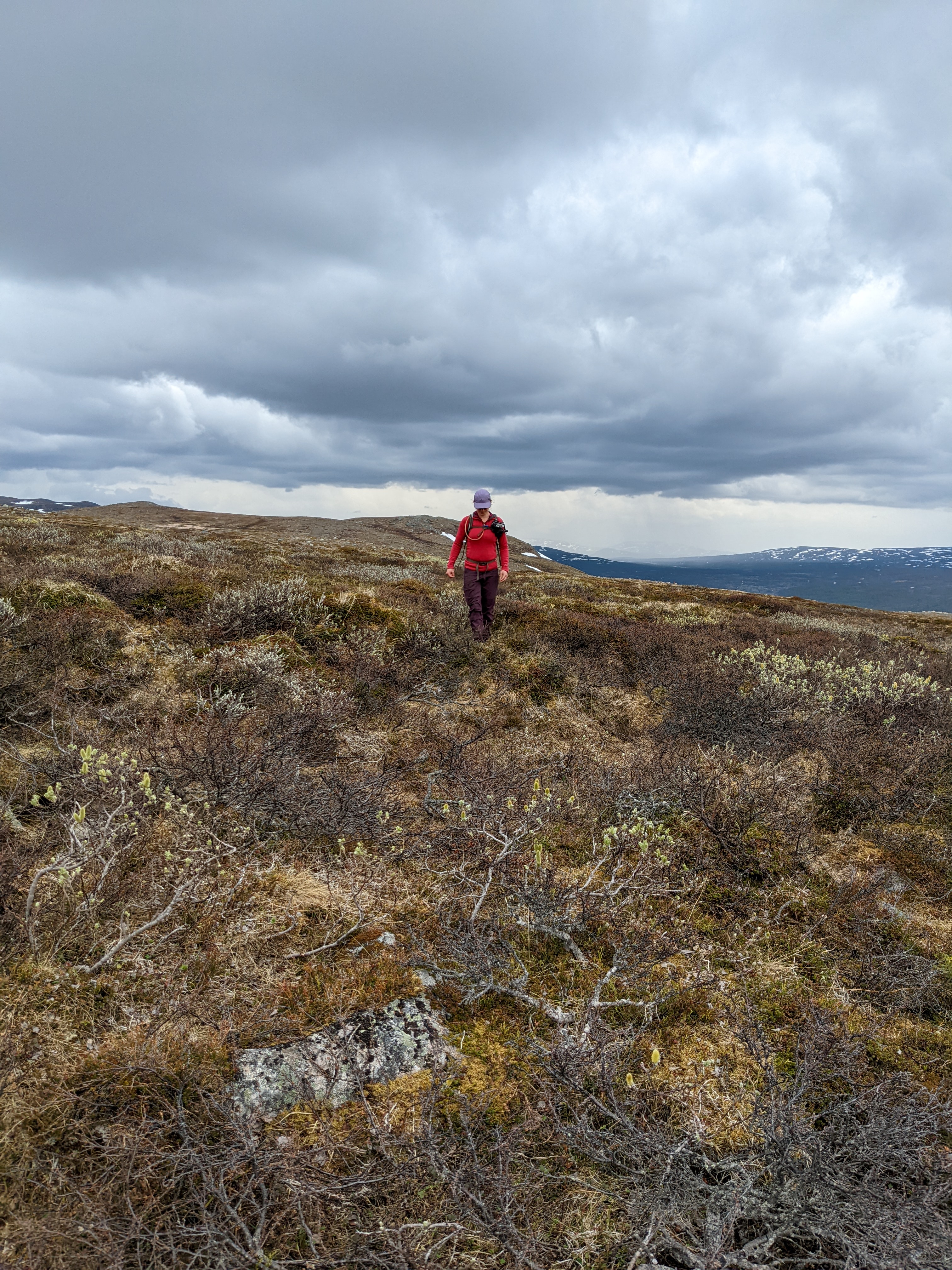
There are little creeks and ponds all over the place, running under snow fields, and crawling through rock piles. They seem, somehow, to support snails.

Birds are all over up here, including a lovely small raptor we saw and whoever makes these cute round nests.

And of course, the reindeer.

The Northern Sami graze them here in the summers, and with special permission may also run them here at other times of year.

The rain that had been threatening caught up with us, and the temperature dropped with it. We ruled out a climb, and spent our time squelching around looking at all the cool stuff up there. If you have a good eye, you might spot the herd of reindeer on the horizon in the photo below.
![snow on the tundra with reindeer barely visible in the distance]](/assets/images/ovre-dividal/herd.jpg)
It was a good-sized group, probably thirty animals, mostly mothers with their young. We kept our distance, and a favorable wind made it possible for us to watch them for quite a while. Shed antlers were everywhere, and occasional bones as well. Life appears in amazing places.

Drying out
When we were good and thoroughly wet, we left the high bench for our cabin, still empty despite it being a Saturday afternoon. Heidi got a fire started to dry our clothing, while I warmed myself twice, cutting and splitting the next round of firewood.
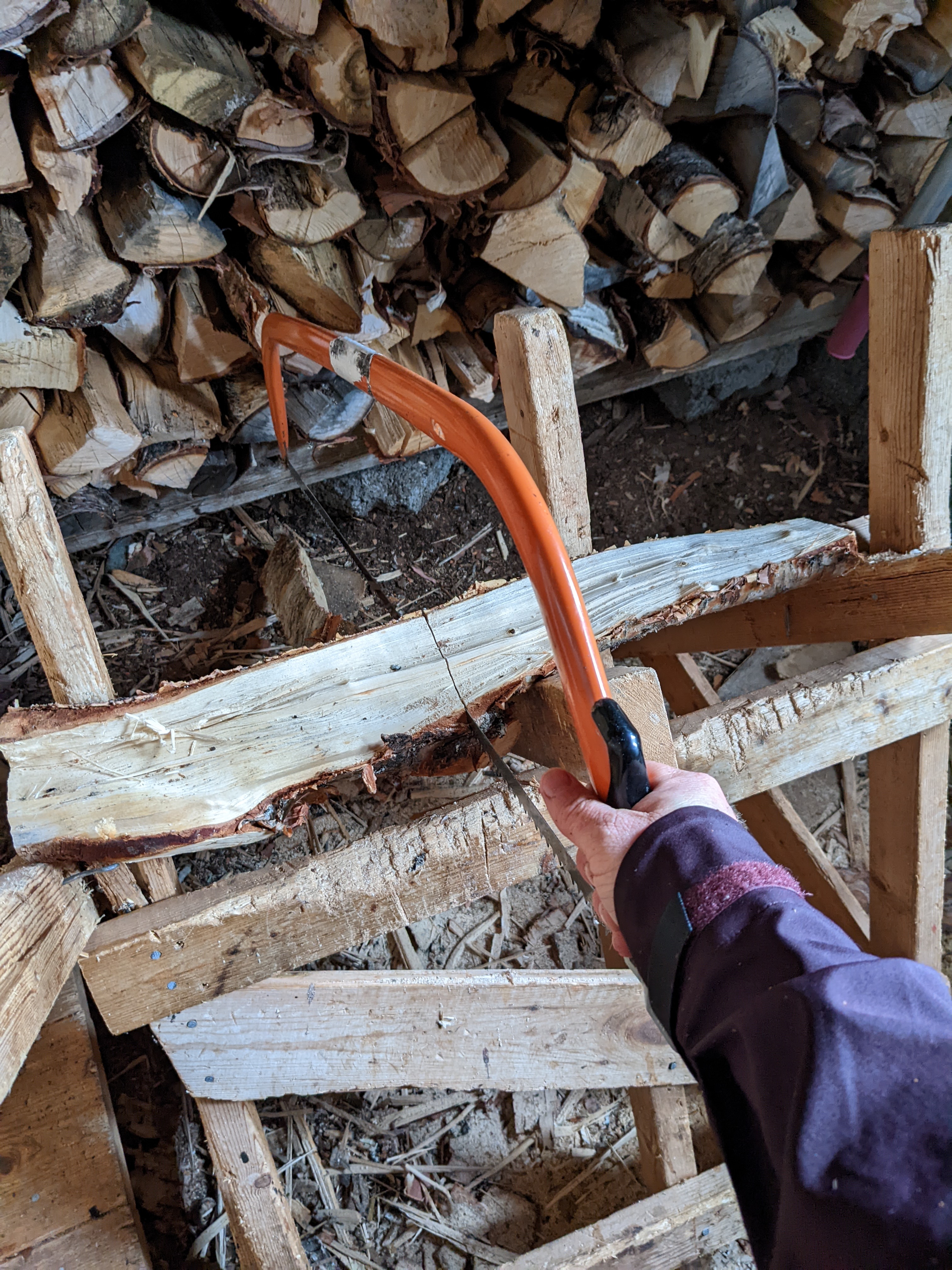
After a sweet but simple lunch of crackers and cheese, oat biscuits etc, we settled into some crafty work. H worked away at a pair of socks she’s knitting, and I cut, etched, and ash-stained a couple of very small, very ugly beads from a stray piece of antler.

When I can figure out how to hollow the centers out, maybe I’ll make some nettle cordage for them. How did peoples without metal tools do stuff like this? Were beads just generally shorter, so a long, thin tool wasn’t needed to hollow them out? And how do you make a bone needle? Do you need a (stone) knife for the task? Do you smash the bone first to get shapeable needle blanks, or is the process more deliberate?
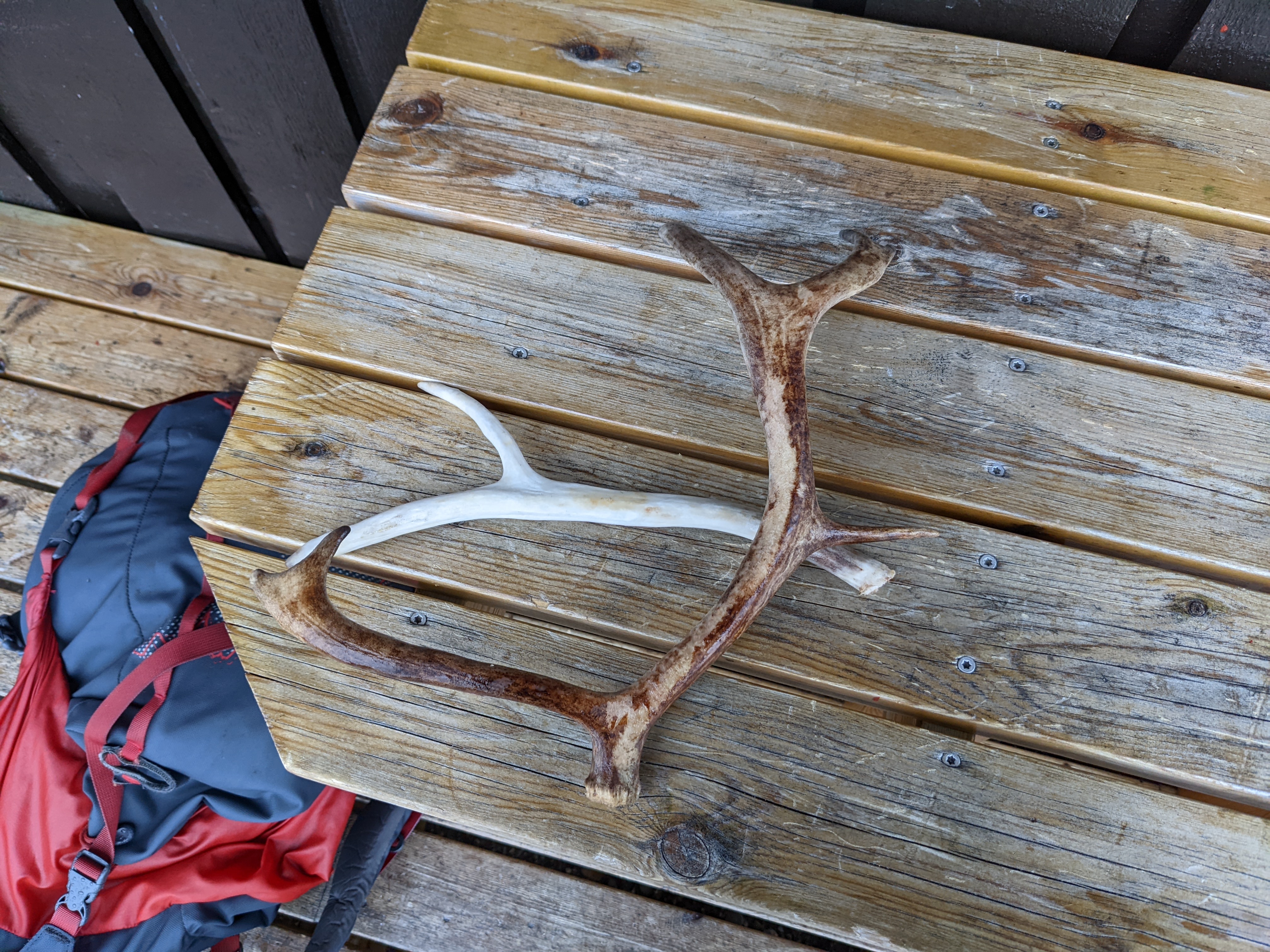
Onward
We settled in for the night, and woke to clear-enough skies. The creeks had risen, making the rock-hopping a little more exciting.
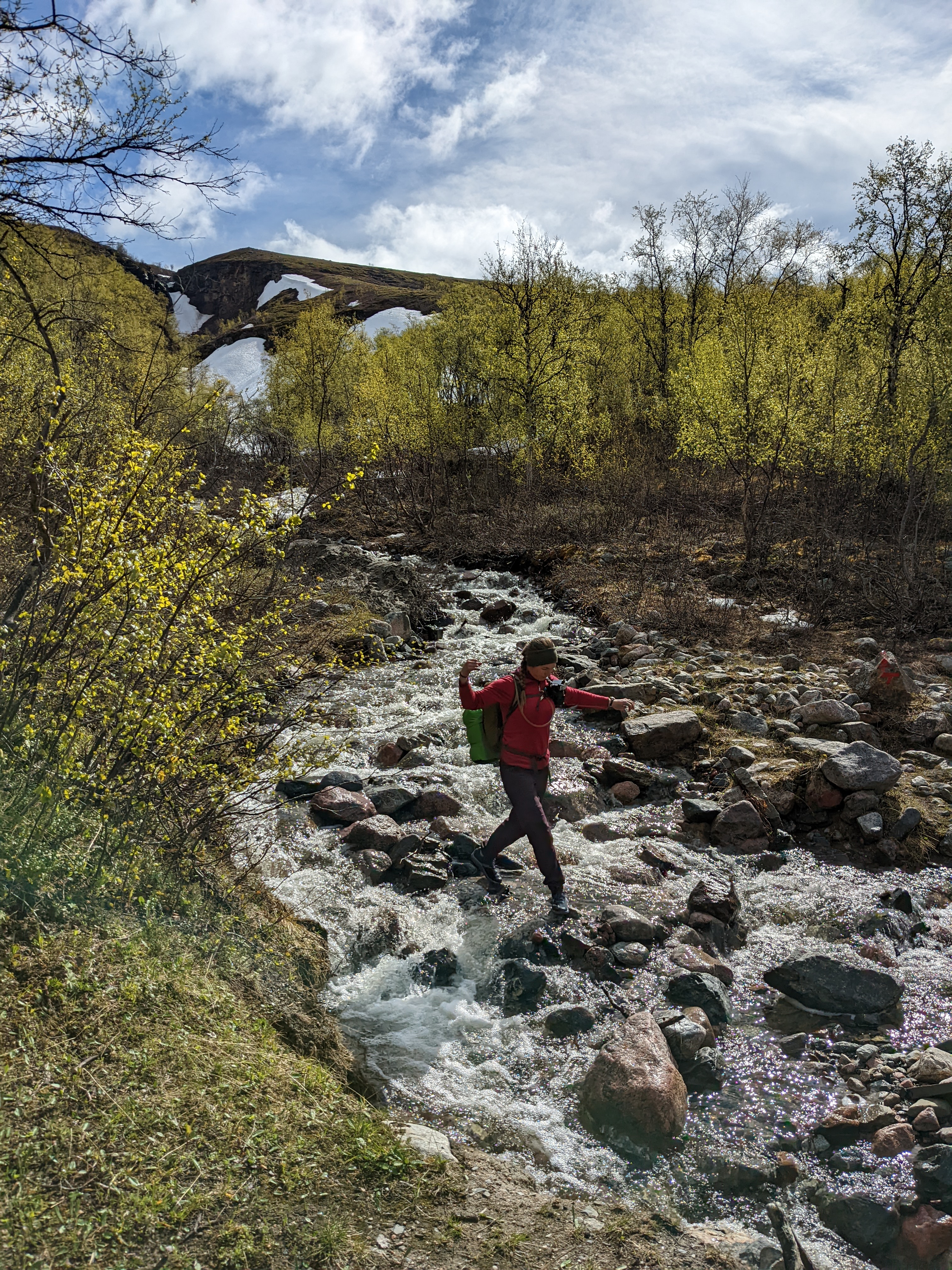
The seven km to the bikes went quickly, with mostly-clear skies and a discussion of whether a similar hut system would be feasible in the US, and if so, how it would impact the people and places involved. It was time to be on our way.
New friends
- sweet branching lichens at Finnbruene
- a real-live DNT cabin!
- crowberry flowers
